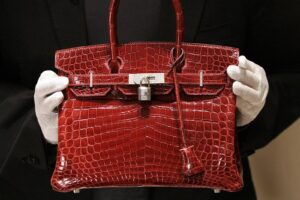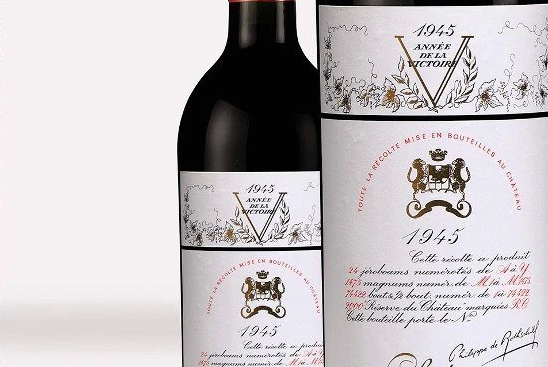There’s an old saying that “whatever happens, the rich get richer”. And one of the ways they’ve been doing this for decades is with fine wine.
This is because fine wine is unique among collectibles. It combines sensory pleasure with a long track record of steady returns should you ever decide to sell some, or all of it.
Fortunately, fine wine’s benefits are not just for the uber-wealthy anymore. The past two decades have witnessed an unprecedented democratisation in the fine wine market. Detailed insights and tasting notes are easy to find, pricing data is transparent, and you can buy and sell your bottles on trading platforms at low fees.
As a result, fine wine is now being touted as a core staple in investment portfolios. Last year, Bank of America’s chief strategist listed it among his top investment picks for the next decade. And in this recent research study, professors in France and Switzerland drew attention to fine wine’s unique benefits in diversifying investment portfolios.
So how has it achieved this, and what does the future hold?
In this article, we take a look at the fundamental drivers of the fine wine market, and the main reasons why people collect wine. These include drinking, investing, or the hybrid model of optionality, where you sell some and drink others with the profits. Others are setting aside wine collections for their children, as unique time capsules of the pre-climate change era.
Fine wines as the ultimate luxury brands:
The most famous wines of the world are arguably the first ever luxury brands.
The greatest are agricultural art-works, virtuosos of vinosity, that for centuries have been recognised as both prestigious and worthy of premium prices.
In the late 19th century, Thomas Jefferson, went to the considerable trouble of shipping 20 cases of Chateau Lafite Rothschild and another 10 of Haut Brion from France to the US – where he later served them to White House guests.

Thomas Jefferson, the 3rd US President, was a renowned oenophile who often served Chateau Lafite Rothschild to guests in the White House
Russia’s Tsar Nicholas loved Cristal champagne so much he insisted on being its sole customer.
But a rich history isn’t enough. To qualify as luxury, an item must also create an emotional resonance that transcends price and subjective opinions of quality.
This is where the top fine wines come into their own. They are capable of inspiring fascination, passion and even obsession among their most loyal adherents. And their prices reflect that.
Supply and demand
This may seem obvious, but the greatest wines in the world are made in limited quantities.
If Hermes wants to meet increasing demand for its Birkin handbags, it can hire and train more people to make them. Not so for top wine chateaux and estates. Their production is dependent entirely on how many grapes they harvest each year from a specific plot of land.

The supply of top wines cannot be increased, unlike other collectibles like Birkin handbags (pictured)
This creates an imbalance between supply and demand, which has been widening steadily over recent decades.
Just 50 years ago, the top wines of France were traded mostly within Europe. Now, buyers are just as likely to come from the U.S., Japan and, increasingly, developing markets in Asia. According to this study last year, Chinese wine imports soared by an average 11.4% annually between 2010 – 2018.
This has coincided with growing interest in fine wine as an alternative asset class, fuelled by an army of wine investment companies and funds, as well as individual speculators.
In parallel, the pool of collectible wines has grown increasingly diverse, as collectors hunt for the stars of the future in new and emerging regions and producers (see here).
Somewhat predictably, the result has been steadily increasing prices.
The Liv-ex 100, the leading industry benchmark for the fine wine market, marked its 19th month of consecutive gains last December to hit an all-time high – and there are no signs of a slow-down.
Indeed, there is at least one very good reason to believe that this is just the beginning.
The climate change conundrum
The greatest wines of the world are especially vulnerable to the effects of climate change.
Put simply, the wines of today are the best ever made, due to advances in technology and continual refinements to winemaking techniques. But these same wines are unlikely to exist, in their current form at least, in the decades to come and maybe sooner.
In April last year, a killer frost destroyed more than a third of the total grape harvest in France, resulting in an estimated €2 billion loss. French officials described it as “the greatest agricultural catastrophe of the beginning of the 21st century”.

A wine grower lights heaters to protect vineyards from frost damage in northern Burgundy
According to scientists, such events are likely to become the norm as warmer winters encourage vines to bud earlier than usual, only to get decimated by Spring frosts.
In fact, many collectors now view climate change as the single most important driver of future prices – as noted in this recent article in The Times of London.
The result is a growing realisation of the urgency now to capture and preserve today’s great wines as living memories of a moment in time – before they are lost.
On that slightly bleak note, we get to the fun part of this article: What to do with your wine once you’ve bought it.
The art of conviviality
Great wine fuels that most essential of all human needs, social interaction. A brilliant bottle shouldn’t be hidden away endlessly for a special occasion. It makes an occasion special.
There is an alchemy involved in creating great wine that is almost mystical. Every bottle embodies a moment in time, crafted from centuries of hard-won experience handed down through generations.
This is enhanced further by the rituals of wine, and the language of critics. Take the late wine critic Michael Broadbent’s note for 1945 Chateau Mouton Rothschild:
“The power and spiciness surge out of the glass like a sudden eruption of Mount Etna: cinnamon, eucalyptus, ginger… Impossible to describe but inimitable, incomparable.”
Most people wouldn’t admit to this, but simply owning such historical bottles also confers status, and demonstrates one’s taste and knowledge.
Put it all together and you’re talking about a heady combination and a fun dinner party.
Wine investing and the concept of optionality
If asked, wine collectors will often cite different reasons for investing their hard-earned capital into rare liquids, but many share a similar path.
This begins with a budding interest, followed by a gradual honing of knowledge of different wine regions and styles, and their personal tastes. Somewhere along the line there is usually an epiphany – that the wine they bought a year or two ago has gone up 30% in value.

Fine wine prices hit yet another all-time high in December 2021, according to Liv-ex, the fine wine marketplace
And, with that, we have two of the greatest motivating factors in the world: sensual pleasure and monetary reward.
Those that dig a little deeper will realise that the fine wine market, despite becoming increasingly transparent over the years, remains inefficient.
Wine merchants can be slow to update their prices after big news events, like fresh critic ratings. Some emerging trends, meanwhile, can take weeks or longer to filter down into the broader market – providing valuable lead time for those who are quick to identify shifts in sentiment.
It’s also possible to dramatically reduce your downside risks and create a “risk floor,” by following a step-by-step process, as we outlined recently in this article.
Best of all, in many countries wine profits are not subject to capital gains tax, so what you make is what you get.
What all of this effectively adds up to is “optionality” – the opportunity to drink your wine, sell it or, best of all, fund your drinking with a few sales.
Wine also provides a unique form of retail therapy. After all, unlike a Ferrari or wardrobe of designer clothes you’ll never wear, you are very likely to get your money back – or more. So when your partner berates you for always buying wine, you can just say “I’m investing”!
Legacies for children
This brings us to our final point: the ability to create wine legacies, so that loved ones can share your passion one day, and experience what great wines used to taste like.
Most parents with sufficient resources will at some point think about what to hand down to their children. There are college funds, wedding funds, and now, increasingly, “wine legacy” funds. These comprise a diverse selection of the most investable wines, preserved in perfect condition for future enjoyment, or sale.
Not only does this represent a diversified store of wealth, it also preserves for your children something living, unique, and intensely personal – a sort of time capsule of ephemeral artistry.

Like Patek Philippe watches, a fine wine collection is something precious that can be handed down to future generations
A bit like the famous Patek Philippe ads, you don’t necessarily have to own a fine wine collection; you can merely preserve it for the next generation.
If wine continues to grow in rarity and value, based on the factors outlined in this article, your children may have cause to thank you – on many levels – one day in the future.
We hope you enjoyed this article and welcome you to get in touch for a free consultation, or to download our brochure here.
At 1275, we draw on our decades of experience to help people build future-proof fine wine collections – all with fully traceable, pristine provenance.

